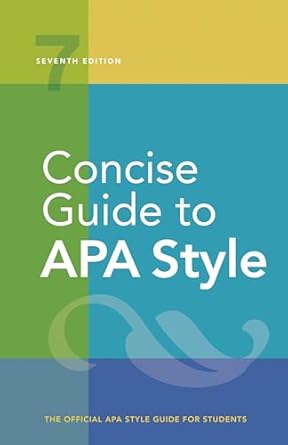[toc]
apa headings mastering style for academic papers
Concise Guide to APA Style: 7th Edition (OFFICIAL)
Page 47 Review
Analyzing APA Style Headings: A Comprehensive Review
This ebook excerpt delves into the intricacies of APA Style headings, offering a structured guide to understanding and implementing them effectively in academic writing.
Let’s dissect the key elements discussed:
Avoiding Single Subsection Headings
The excerpt emphasizes the importance of maintaining a logical outline structure: “Avoid having only one subsection heading within a section, just like in an outline; use at least two subsection headings within a section, or use none (e.g., in an outline, a section numbered with a Roman numeral would be divided into either a minimum of A and B subsections or no subsections; an A subsection could not stand alone).” This rule aims to prevent orphaned subtopics, ensuring each section is adequately developed with multiple facets.
This principle aligns with the fundamental idea of providing depth and breadth within each section of a paper.
Having only one subsection can suggest that the topic isn’t substantial enough to warrant its own heading, or that further exploration is needed.
Understanding Heading Levels
APA Style utilizes a hierarchical system of five heading levels, each serving a distinct purpose: “APA Style headings have five possible levels: Level 1 headings are used for top-level or main sections, Level 2 headings are subsections of Level 1, and so on (see Table 1.3).” This structured approach ensures clarity and organization within the document.
The excerpt continues by explaining that “Regardless of the number of levels of subheading within a section, the heading structure for all sections follows the same top-down progression.
Each section starts with the highest level of heading, even if one section has fewer levels of subheading than another section.
For example, in a psychology paper with Level 1 Method, Results, and Discussion headings, the Method and Results sections may each have two levels of subheading (Levels 2 and 3), and the Discussion section may have only one level of subheading (Level 2).
Thus, there would be three levels of heading for the paper overall.” This illustrates the consistent application of heading levels, regardless of section complexity.
Headings in the Introduction Section
The excerpt highlights a specific rule concerning the introduction section: “Do not begin a paper with an “Introduction” heading; because the first paragraphs of a paper are understood to be introductory, the paper title at the top of the first page of text acts as a de facto Level 1 heading (see Figure 1.3).” This is a key departure from other sections, as the title implicitly serves as the introductory heading.
The explanation for this rule is quite logical.
The opening paragraphs of a paper are inherently understood as the introduction.
Explicitly labeling it as such would be redundant.
Instead, the title takes on this role, establishing the context of the work.
Using Level 2 Headings in Introduction Subsections
Within the introduction, the excerpt advises using Level 2 headings for subsections: “For subsections within the introduction, use Level 2 headings for the first level of Figure 1.3 Use of Headings in a Sample Introduction Risk Factors for the Development of Major Depression Paper title Depression is a serious health problem that affects many people.
No “Introduction” | heading before the _ | first paragraph of introductory text | estimated that between 16% and 42% of people will meet criteria for major depressive disorder | during their lifetime (Kessler et al,, 2005; Moffitt et al., 2010).
Both genetic and environmental | factors influence the development of depression (Pearlman, 2017). [paragraph continues} Level 2 headings Genetic Factors used as subheadings in the introduction A history of major depression in the family increases the risk for a person to develop depression (Gomez & Yates, 2014). [paragraph continues) Environmental Factors Environmental stressors such as the death of a loved one also contribute to the likelihood that a person will develop depression (Pearlman, 2017). [paragraph continues].” This indicates that while the ‘Introduction’ itself isn’t explicitly labeled, its components still require hierarchical organization.
The example provided, “Risk Factors for the Development of Major Depression,” demonstrates this principle in action.
The subsequent Level 2 headings, “Genetic Factors” and “Environmental Factors,” effectively categorize the different aspects explored within the introduction.
Conclusion
In conclusion, the excerpt provides a succinct yet comprehensive overview of APA Style headings.
By adhering to these guidelines, writers can create well-organized, easily navigable, and professionally formatted academic papers.
The emphasis on avoiding single subsections, understanding heading levels, and appropriately structuring the introduction ensures that readers can easily follow the paper’s arguments and understand the relationships between different sections.
Buy full ebook for only $18: https://www.lulu.com/shop/american-psychological-association/concise-guide-to-apa-style-7th-edition-official/ebook/product-rmzpq54.html?page=1&pageSize=4

